Nature’s creativity shines through the stunning fur patterns of certain mammals, making them stand out in their habitats. From stripes to spots, these unique designs help with camouflage, identity, and even temperature regulation. Each animal’s coat tells a story of evolution and adaptation. Let’s explore these magnificent mammals and the exceptional fur patterns that set them apart.
Bengal Tiger
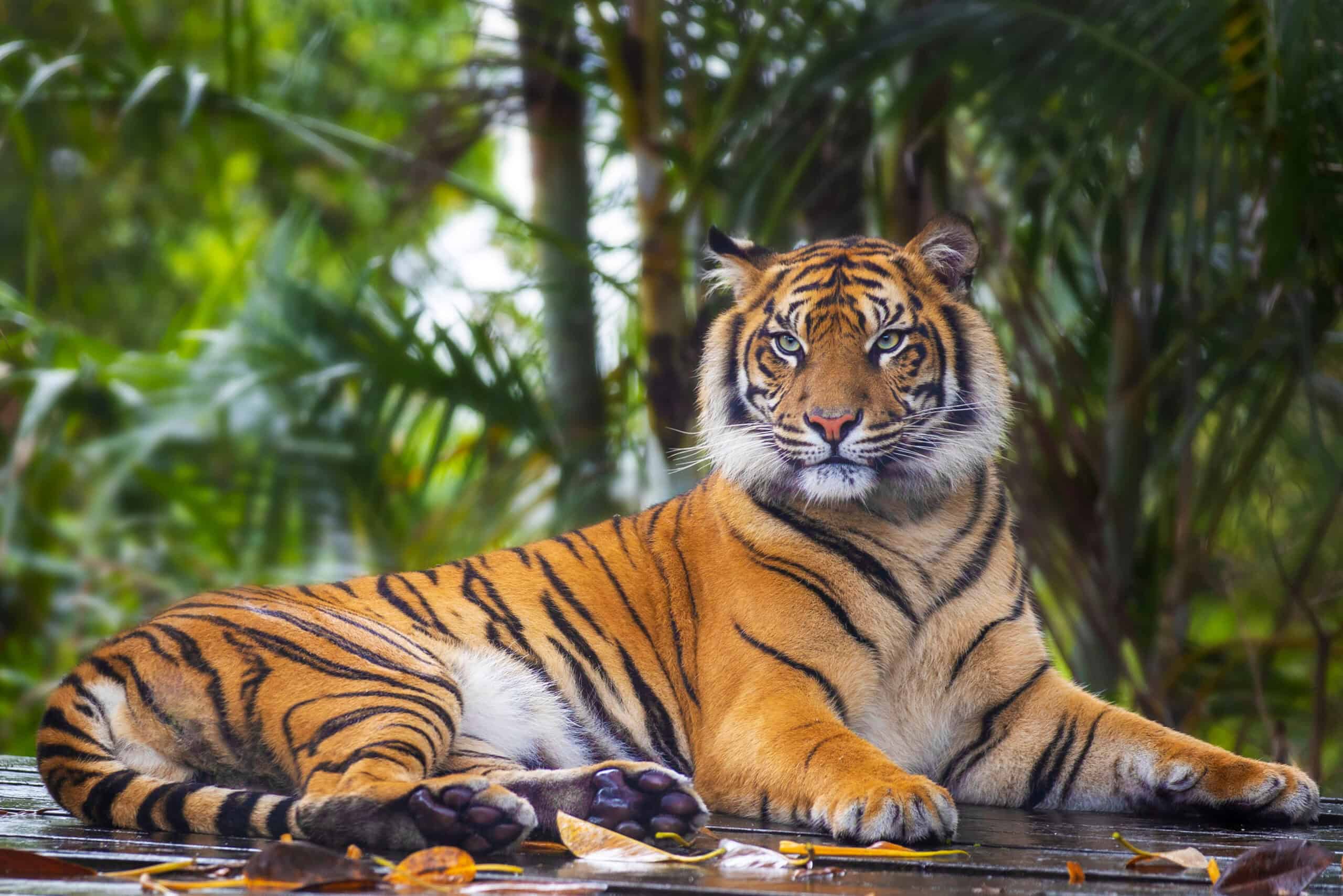
The Bengal tiger is known for its vibrant orange coat covered in black stripes. These stripes are unique to each tiger, much like human fingerprints. They help the tiger blend into the dense forest and grasslands of its habitat. The bold contrast between orange, black, and white makes the Bengal tiger’s fur a stunning display of natural beauty. This magnificent animal relies on its pattern for stealth, aiding its hunt for prey.
Cheetah
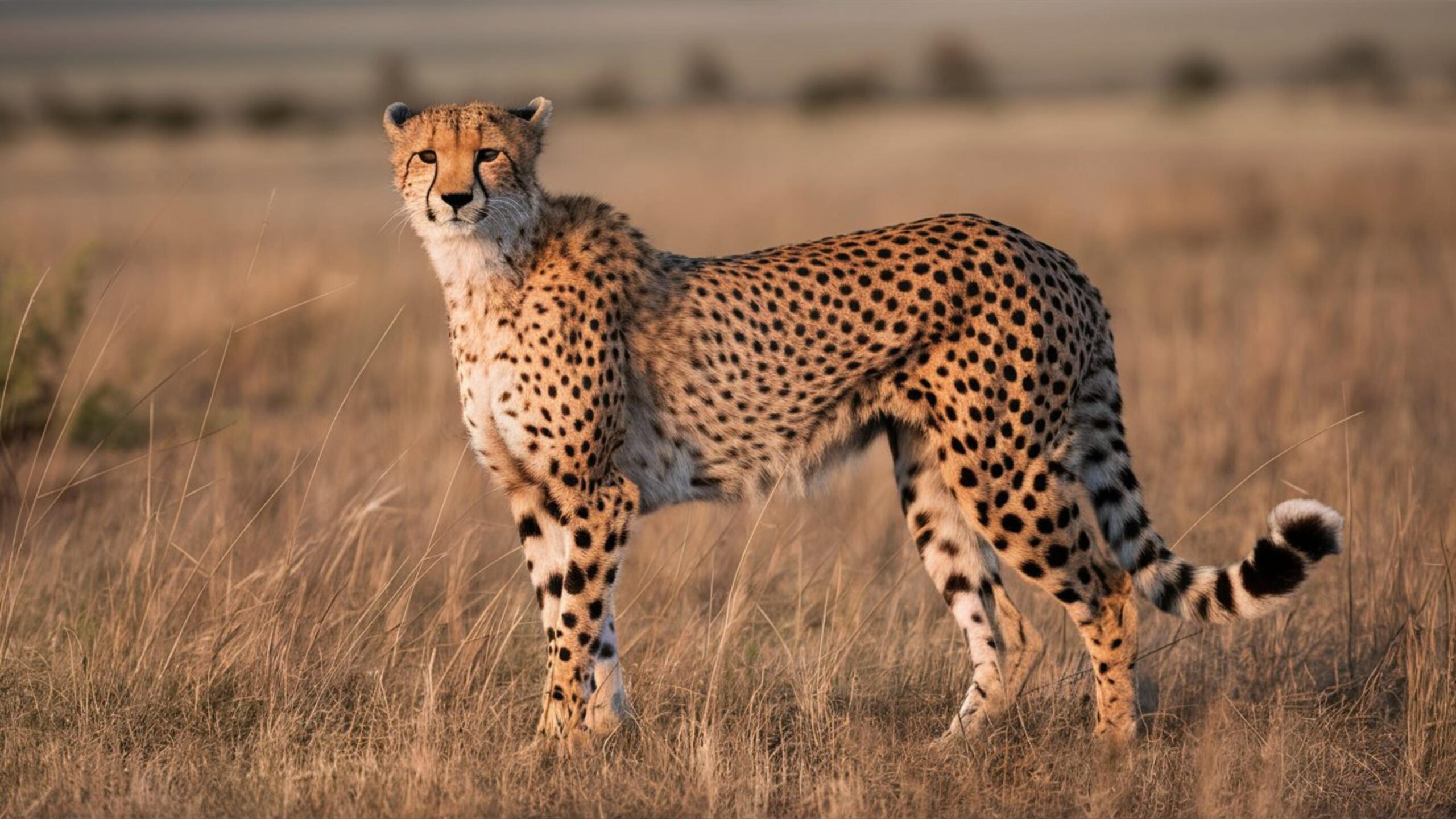
Cheetahs are famous for their sleek bodies adorned with solid black spots. These spots are evenly distributed over their tan coats, helping them blend into the African savannah. A distinctive tear-mark pattern runs from the inner corner of their eyes to the sides of their mouths. This pattern reduces glare from the sun, aiding in spotting prey during high-speed chases. The cheetah’s coat is built for both function and aesthetics.
Snow Leopard
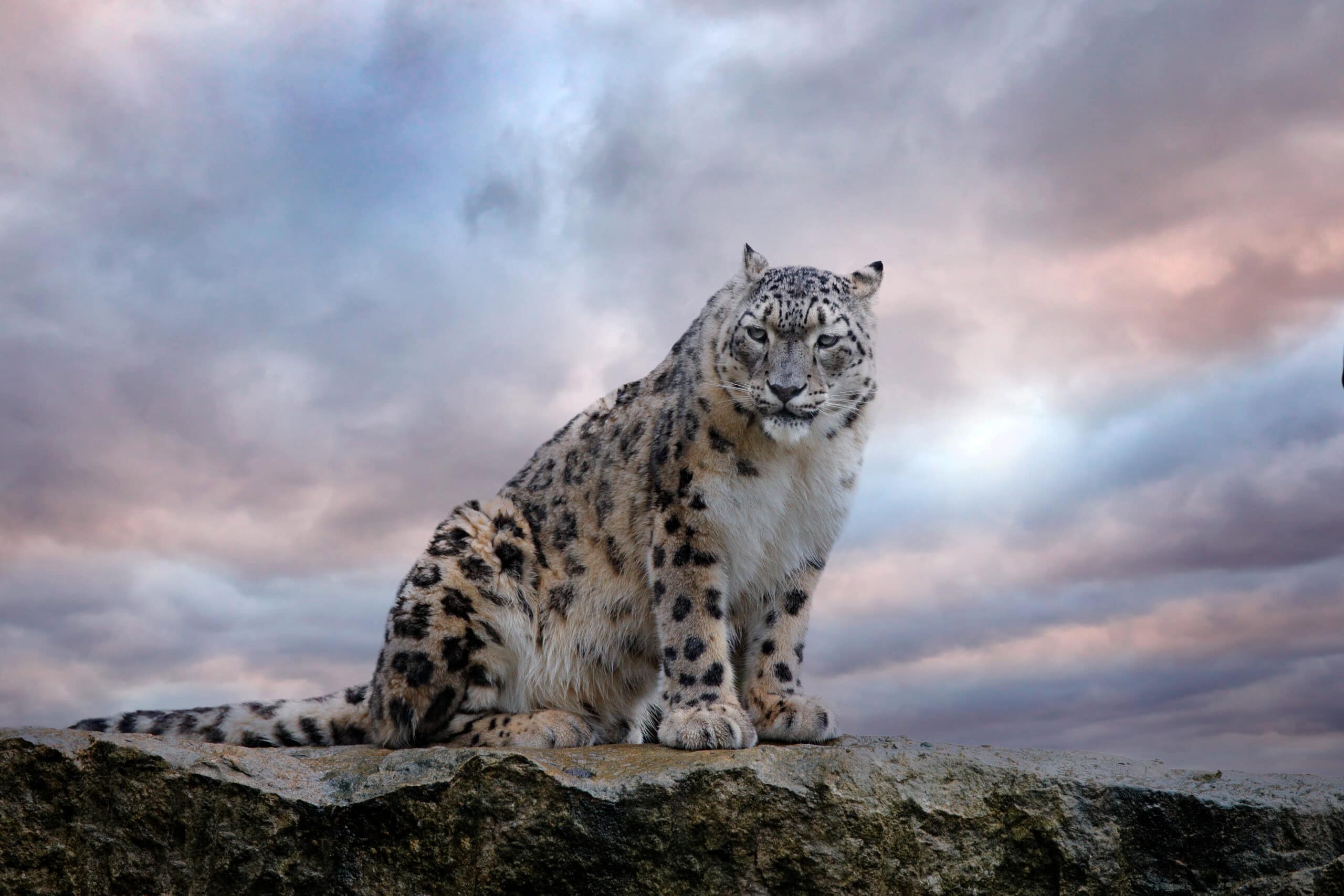
The snow leopard boasts a thick coat covered with rosettes and spots. Its pale gray or white fur is ideal for blending into the snowy mountain terrains it inhabits. The spots, which vary in size, provide camouflage as it hunts on rocky cliffs and snow-covered slopes. The dense fur not only serves as a visual marvel but also offers insulation against freezing temperatures. This combination makes the snow leopard’s coat both practical and breathtaking.
Clouded Leopard
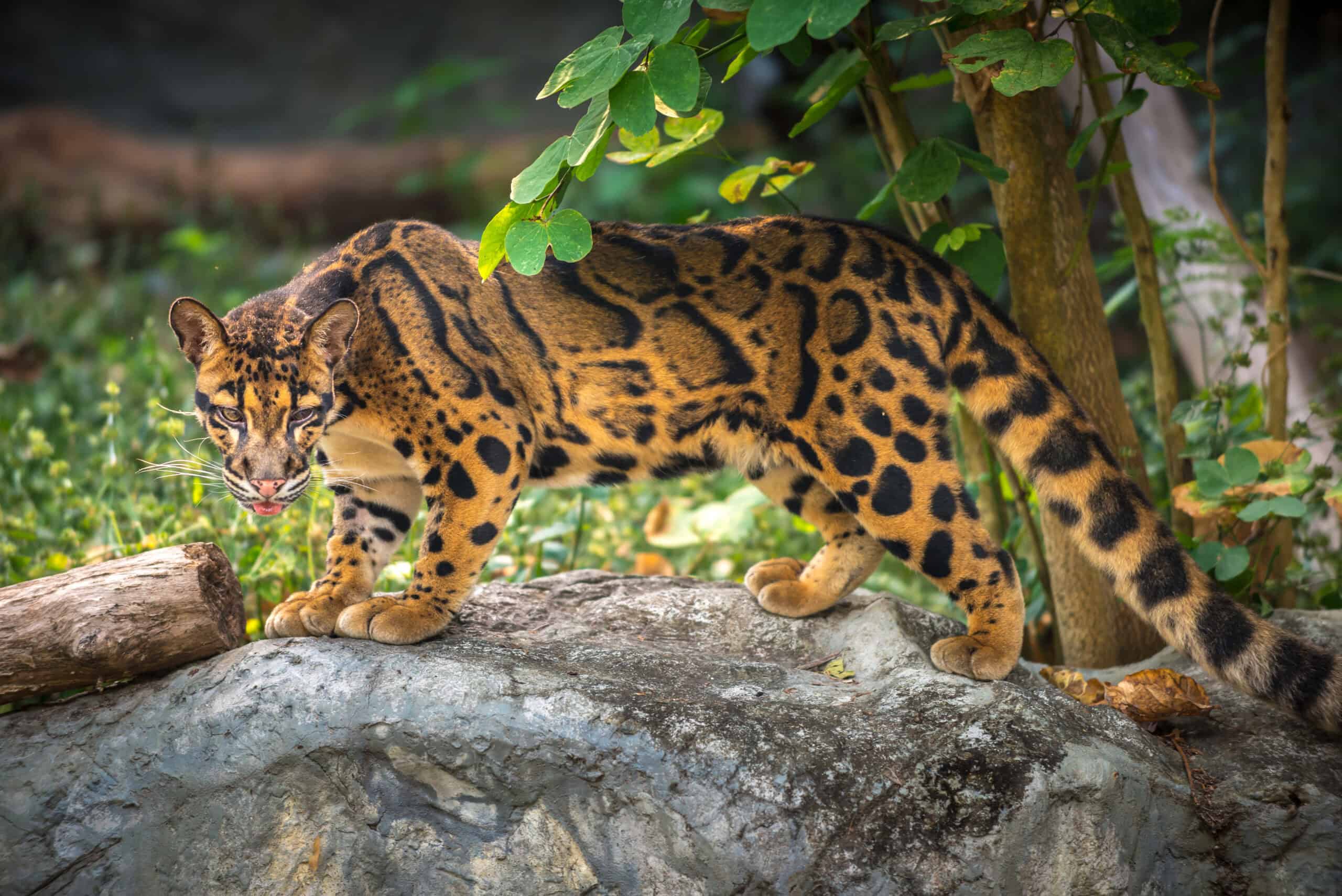
The clouded leopard is named after the large cloud-like patterns on its fur. These irregular blotches are a mix of dark brown and black on a tawny or grayish background. The clouded leopard’s coat helps it stay hidden among the dense canopies of Southeast Asian forests. The blend of soft colors and dramatic shapes gives the animal a mysterious and elusive appearance. Its fur pattern is one of nature’s most artistic creations.
Red Panda
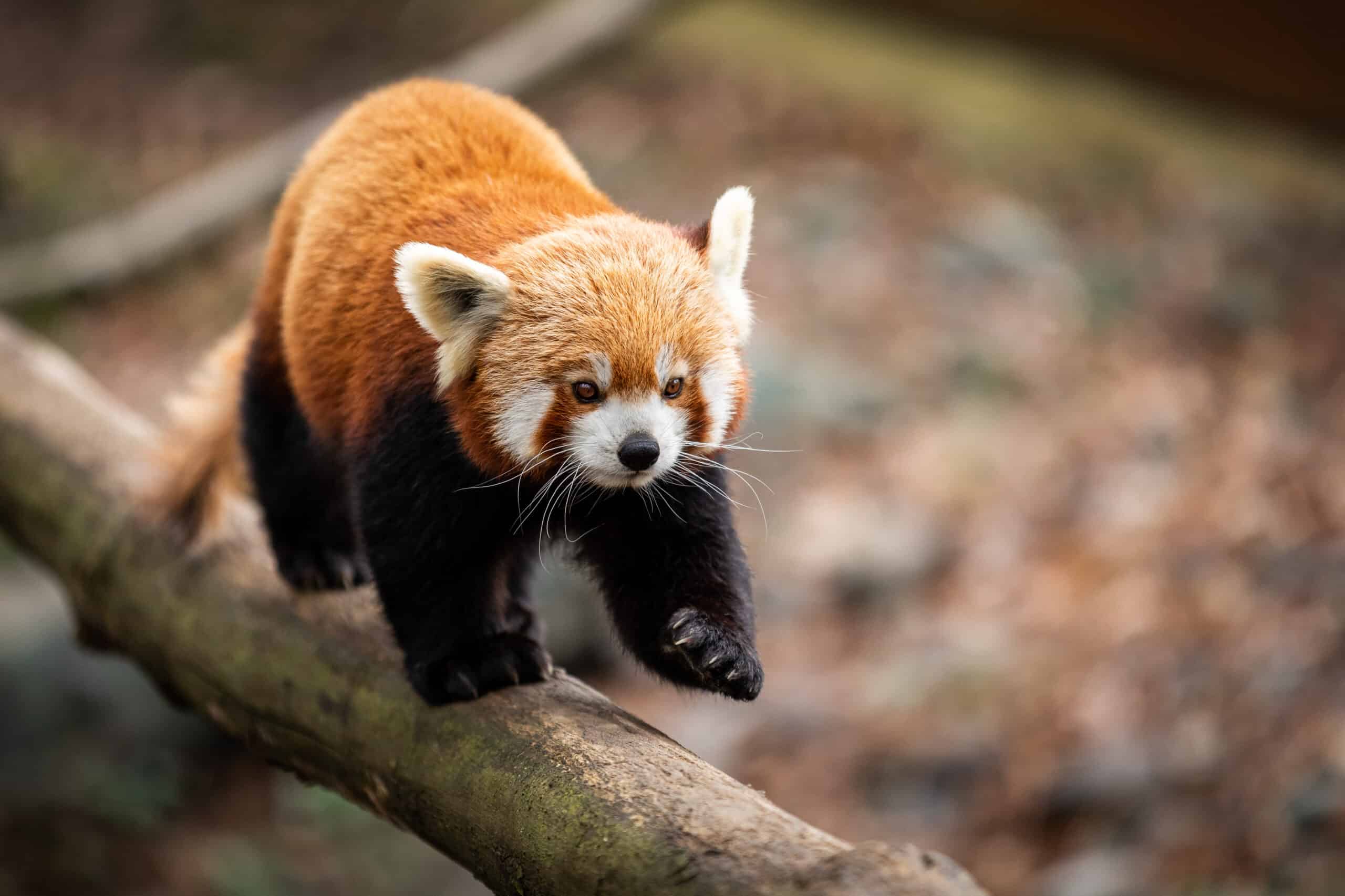
The red panda has a striking rusty-red coat with a mix of black on its legs and belly. Its face is adorned with white markings, giving it a masked appearance. The bushy tail, with alternating red and white rings, adds to its unique look. The red panda’s coat provides excellent camouflage in the bamboo forests of the Himalayas. Its fur helps it blend into the reddish-brown mosses and trees of its habitat, keeping it safe from predators.
Okapi
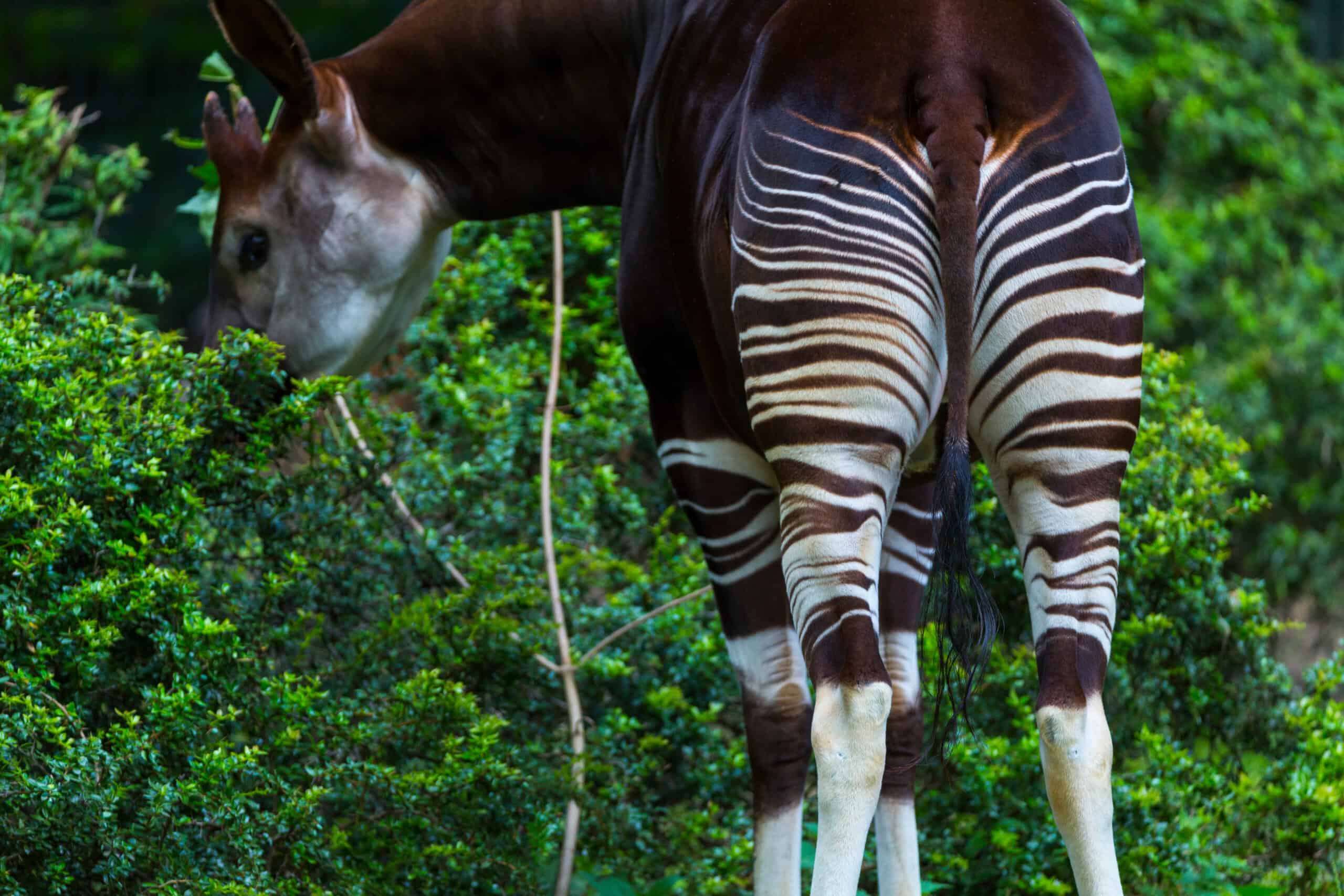
The okapi, though closely related to the giraffe, has zebra-like stripes on its legs and hindquarters. These contrasting white and black stripes help it blend into the dense forest shadows of the Congo. The rest of its body is covered in a velvety brown coat, which adds to its elegant appearance. The stripes not only offer camouflage but also help young okapis follow their mothers through the forest. Its fur pattern is both functional and unique in the animal kingdom.
Giraffe
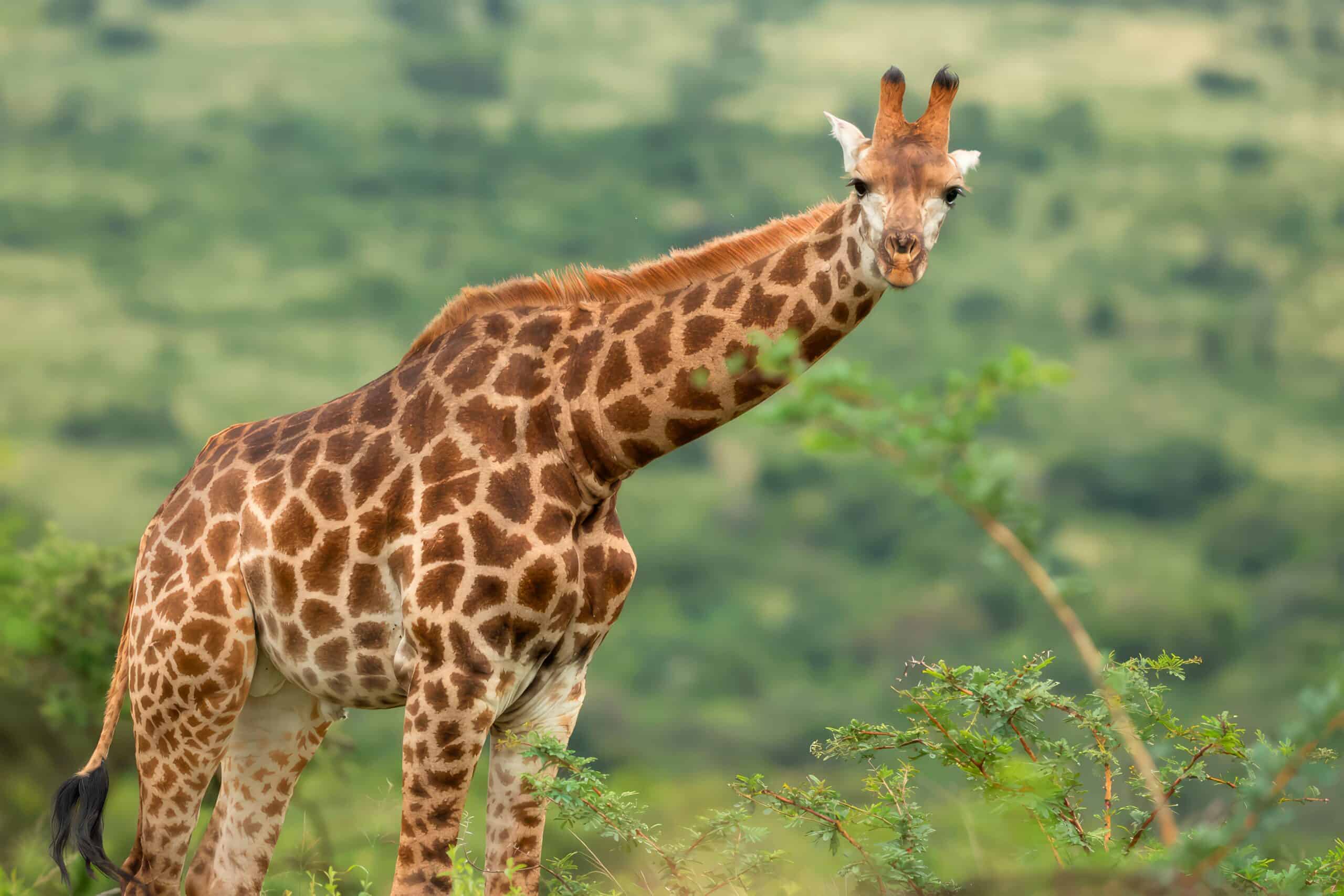
Giraffes are known for their tall stature and mosaic-like fur patterns. Their coats are adorned with irregular patches of brown and orange, separated by light-colored lines. These patches help giraffes blend into the savannah landscape, especially when standing still among trees. Each giraffe’s pattern is unique, and their fur also serves as a form of identification. Their coats are as distinct as their towering figures.
Zebra
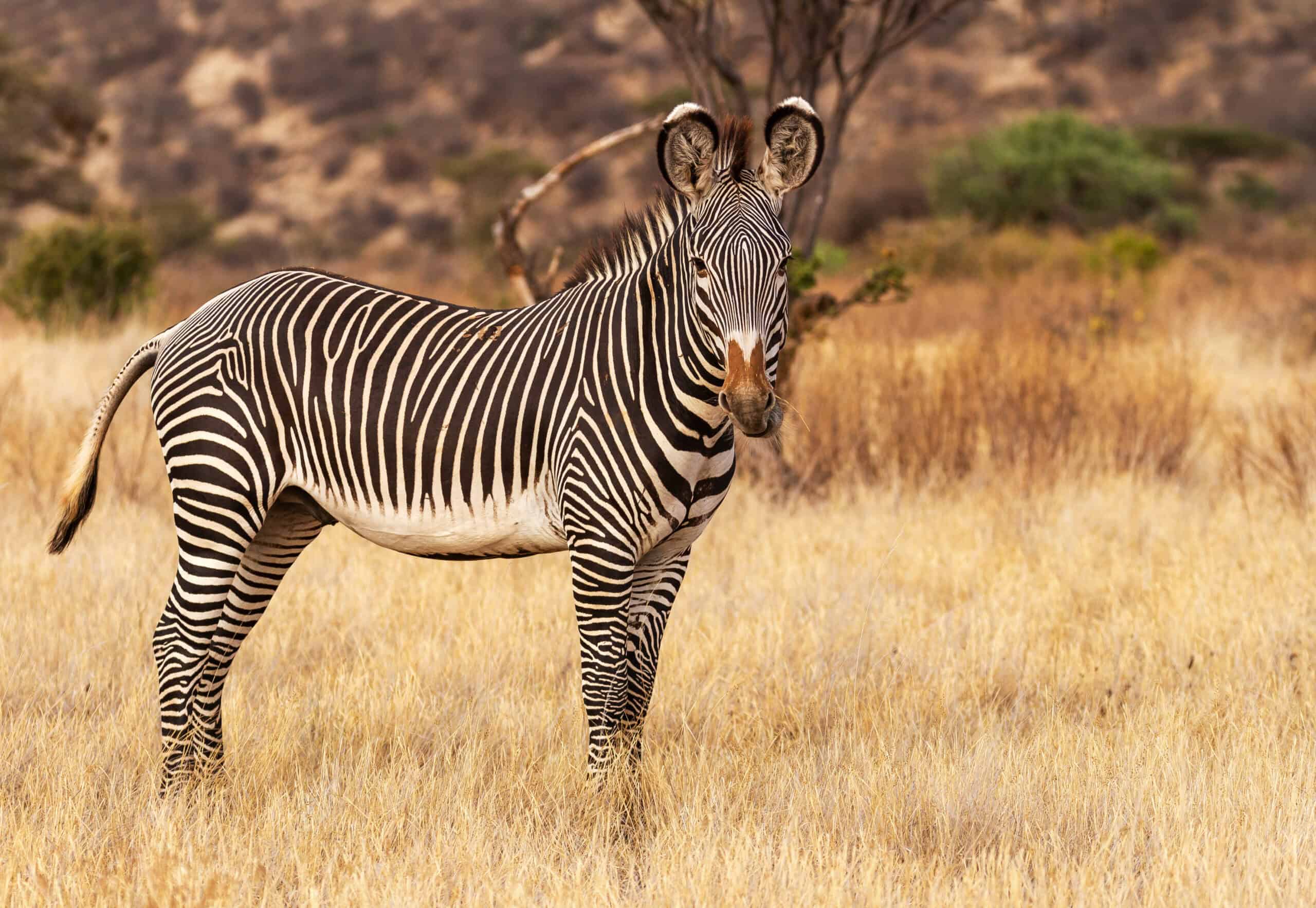
Zebras are instantly recognizable by their black-and-white striped coats. No two zebras have the same stripe pattern, making each one unique. These stripes are believed to confuse predators by creating optical illusions when zebras move in a group. The bold contrast of black and white also helps regulate body temperature. Zebras’ striking fur patterns are both practical and visually mesmerizing.
Ocelot
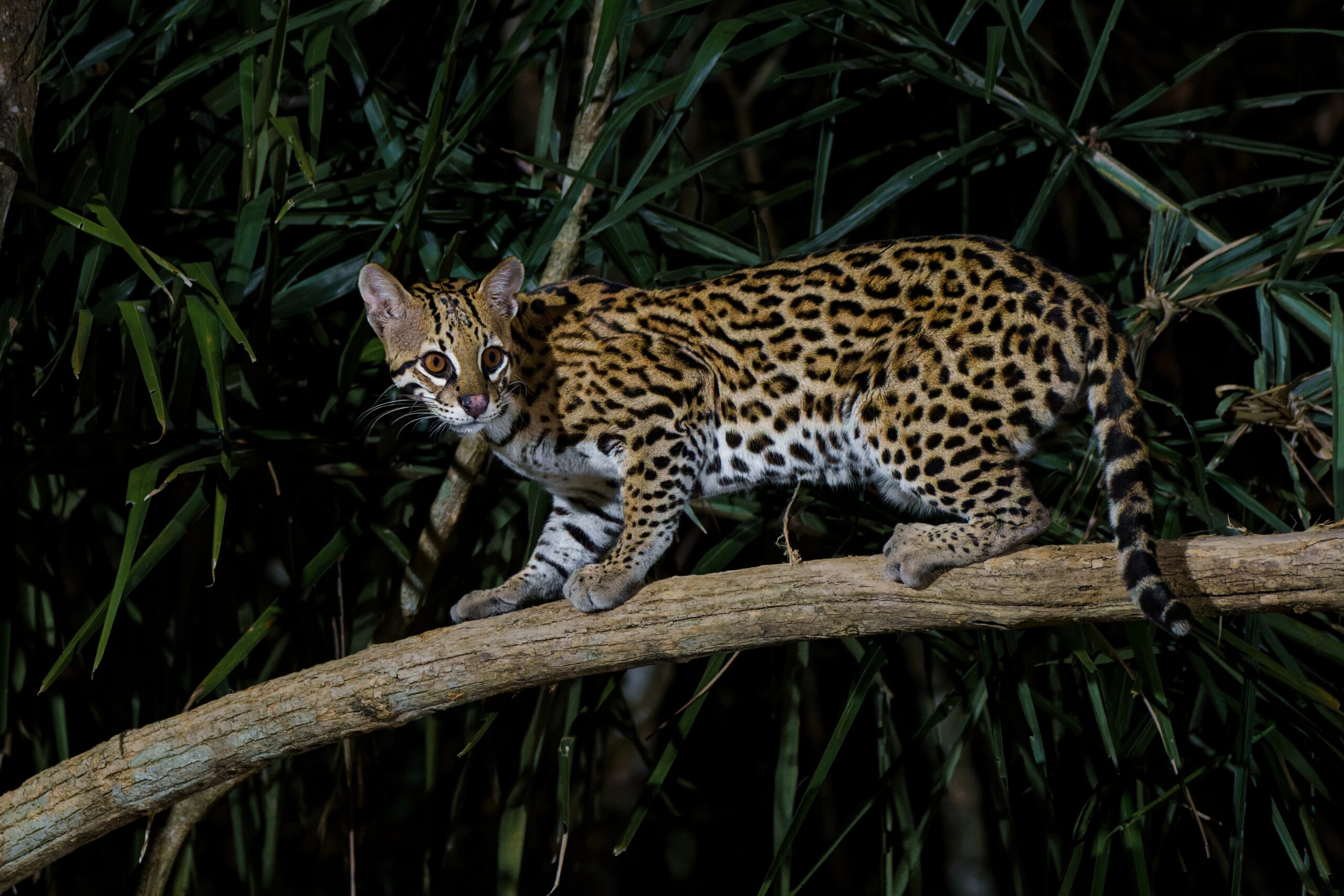
The ocelot’s coat is a mix of striking spots and rosettes on a tawny background. These patterns create a perfect camouflage in the dense jungles and forests of Central and South America. The ocelot’s fur is sleek and short, giving it a refined and elegant appearance. Each rosette and spot is distinct, making the ocelot’s pattern a one-of-a-kind work of art. This wildcat’s fur is not only beautiful but also essential for its stealthy hunting style.
Serval
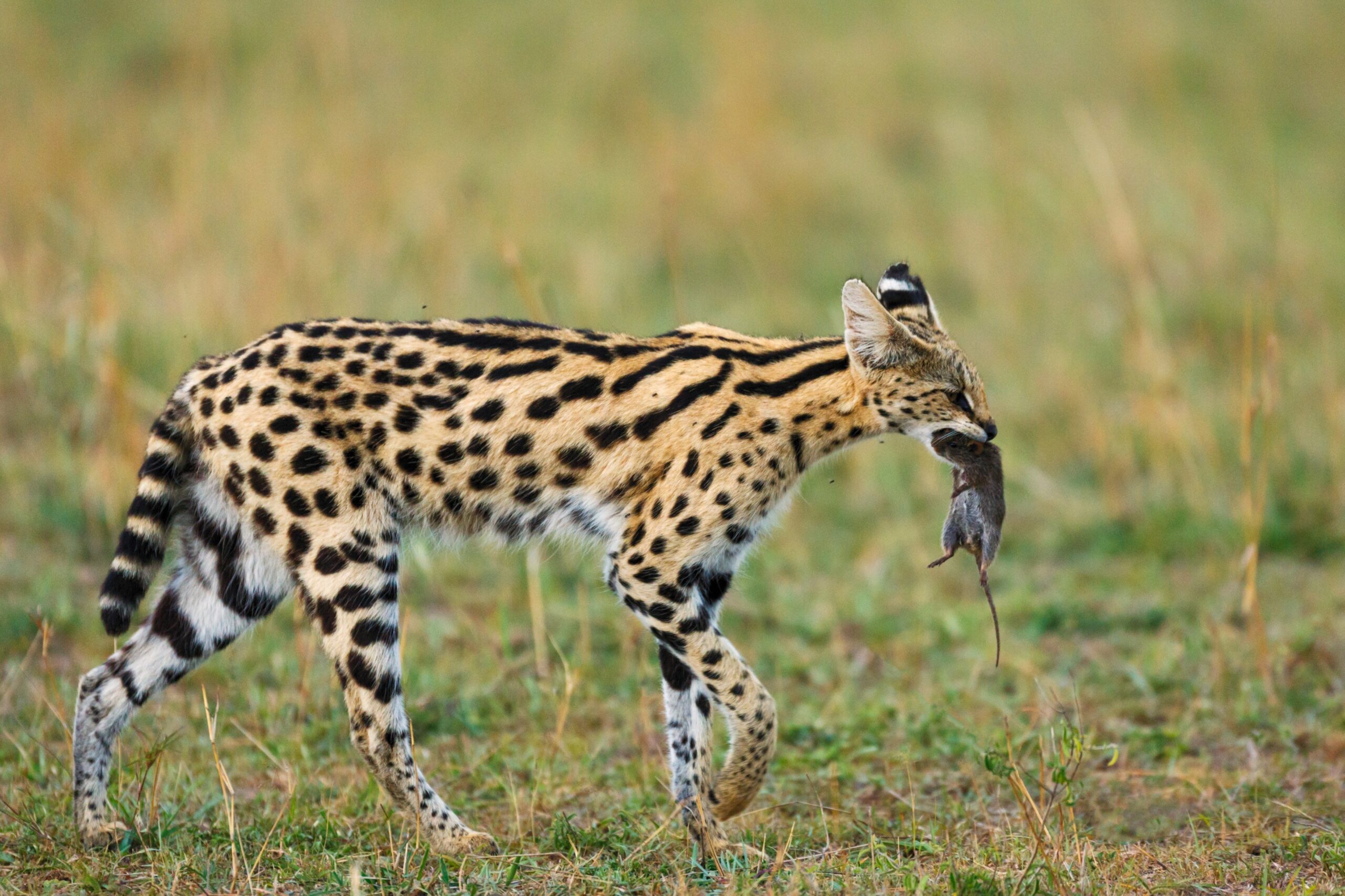
The serval’s coat is a striking display of bold black spots and stripes on a golden-yellow background. These spots vary in size and are complemented by vertical stripes running down its neck. This pattern allows the serval to blend into the tall grasses of the African savannah. The serval’s long legs and sleek body are perfectly accentuated by its unique fur, making it one of the most elegant small cats in the wild. Its coat is a masterpiece of camouflage and beauty.
Malayan Tapir
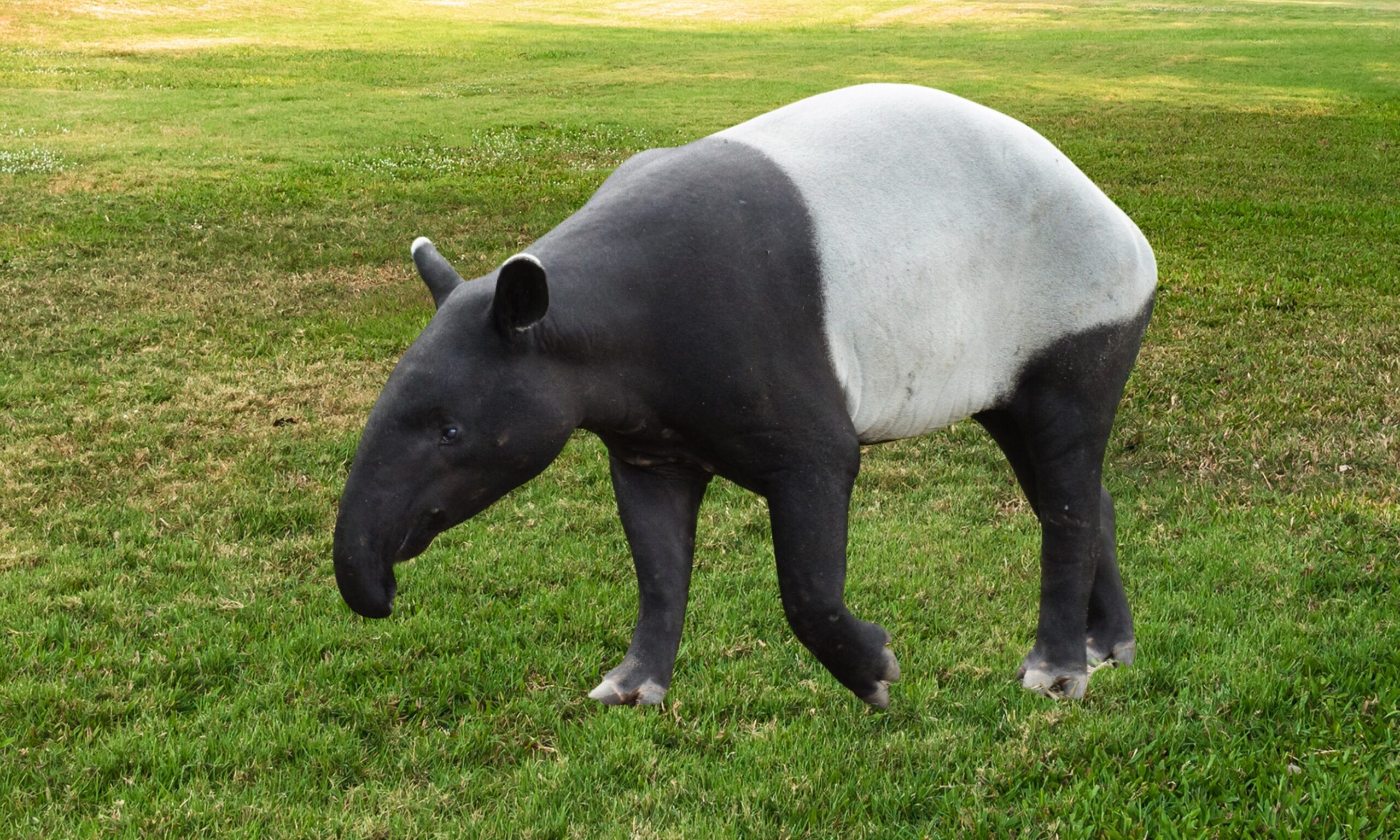
The Malayan tapir has one of the most distinct and contrasting fur patterns in the animal kingdom. Its body is split into two colors, with the front and back portions covered in black, while the middle section is a stark white. This unique color-block pattern provides effective camouflage in the dappled forest light of its Southeast Asian habitat. The thick, bristly fur protects the tapir from insects and rough vegetation. Its bold black-and-white pattern not only sets it apart visually but also helps it blend into its surroundings.
Jaguar
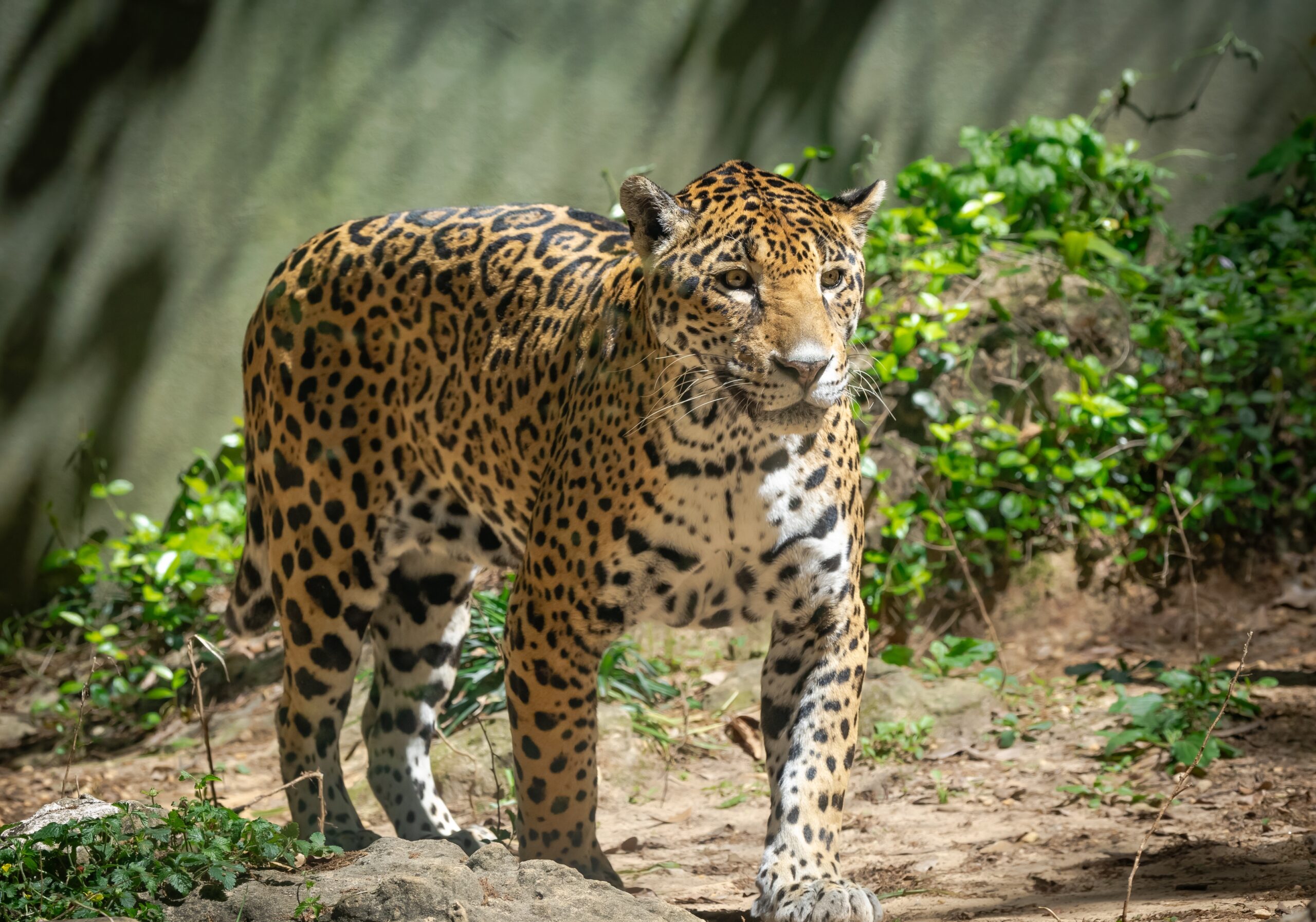
Jaguars are instantly recognizable by their bold, black rosettes on a golden-yellow coat. Each rosette is encircled by smaller black spots, creating a stunning and powerful pattern. This design is ideal for blending into the dense jungle, allowing the jaguar to stalk its prey undetected. The jaguar’s thick, luxurious fur also provides protection in the humid, wild environments of Central and South America. Its coat is as fierce as its reputation.
Ring-tailed Lemur
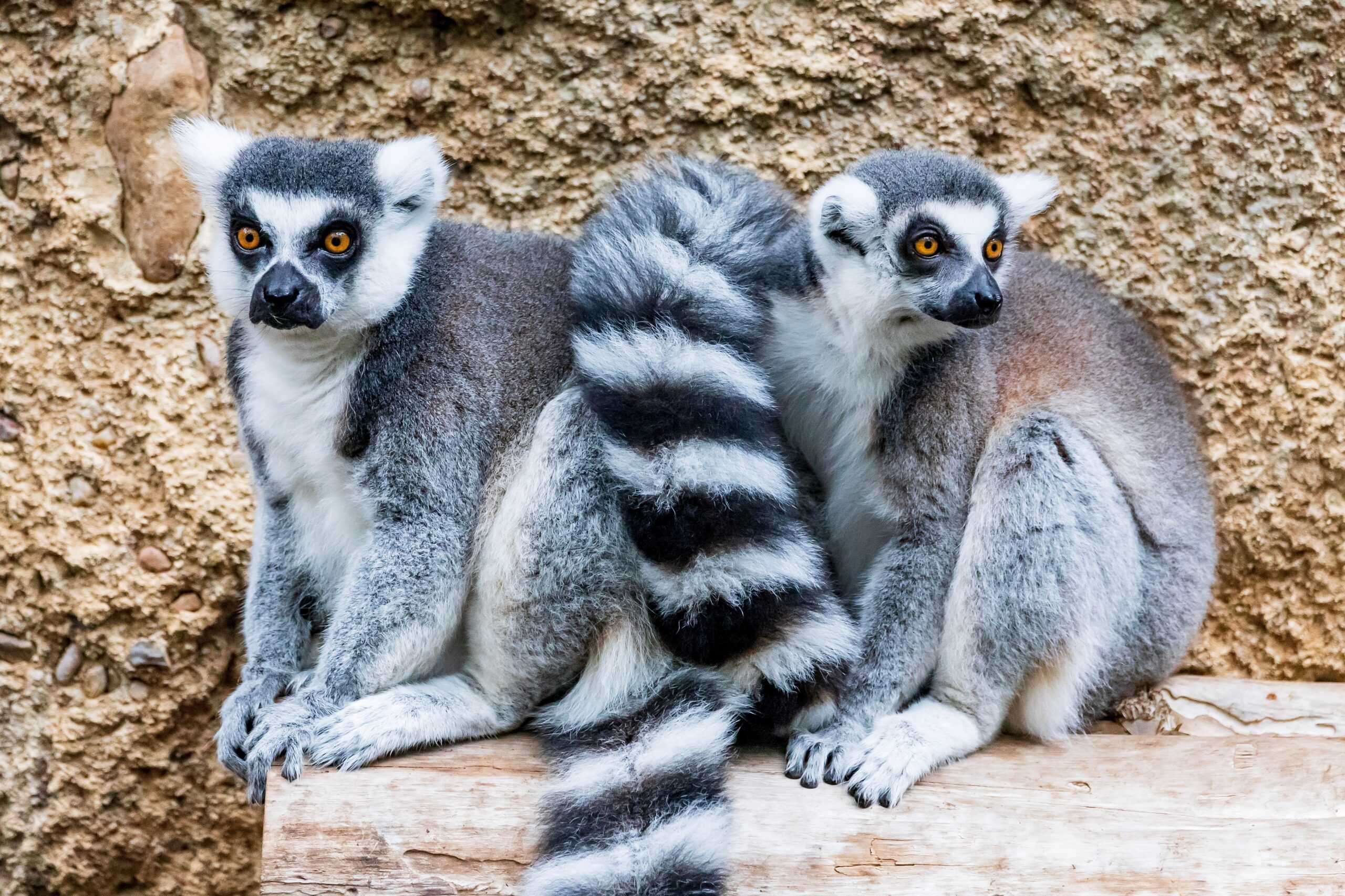
Ring-tailed lemurs are known for their long, black-and-white banded tails. This distinctive feature contrasts with their gray bodies and white faces. The bold tail markings help them stay visible to other members of their group in Madagascar’s forests. Their fur is soft and dense, providing insulation against the cool, misty mornings. The ring-tailed lemur’s pattern is a perfect blend of function and visual appeal.
Kudu
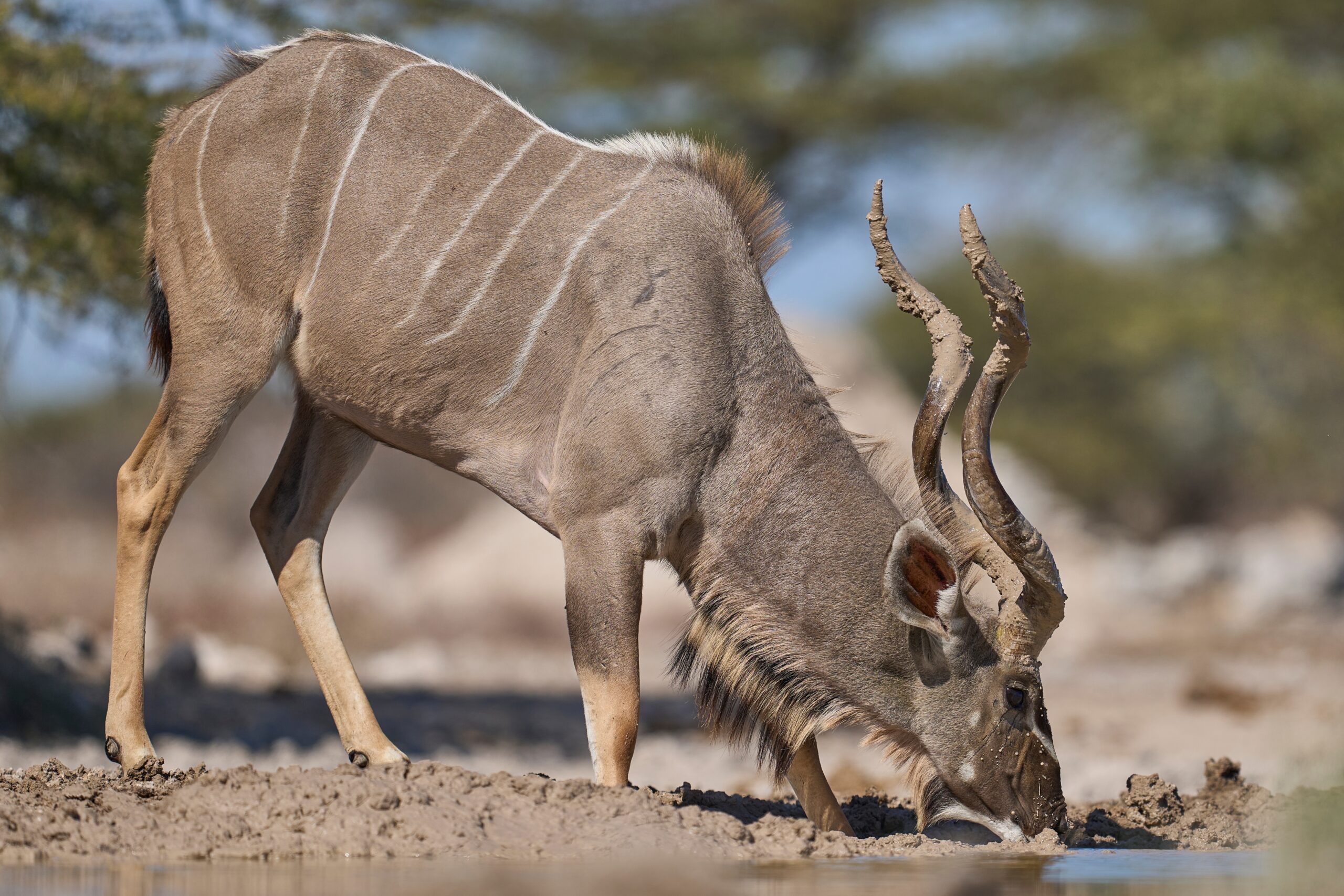
Kudus are large antelopes with striking vertical white stripes running down their brownish-gray bodies. These thin, sharp lines provide camouflage among the tall grasses and trees of the African savannah. The kudu’s coat, with its soft sheen, adds elegance to its already majestic frame. The unique pattern not only protects them from predators but also enhances their graceful appearance. The kudu’s stripes are a natural masterpiece.
Spotted Hyena
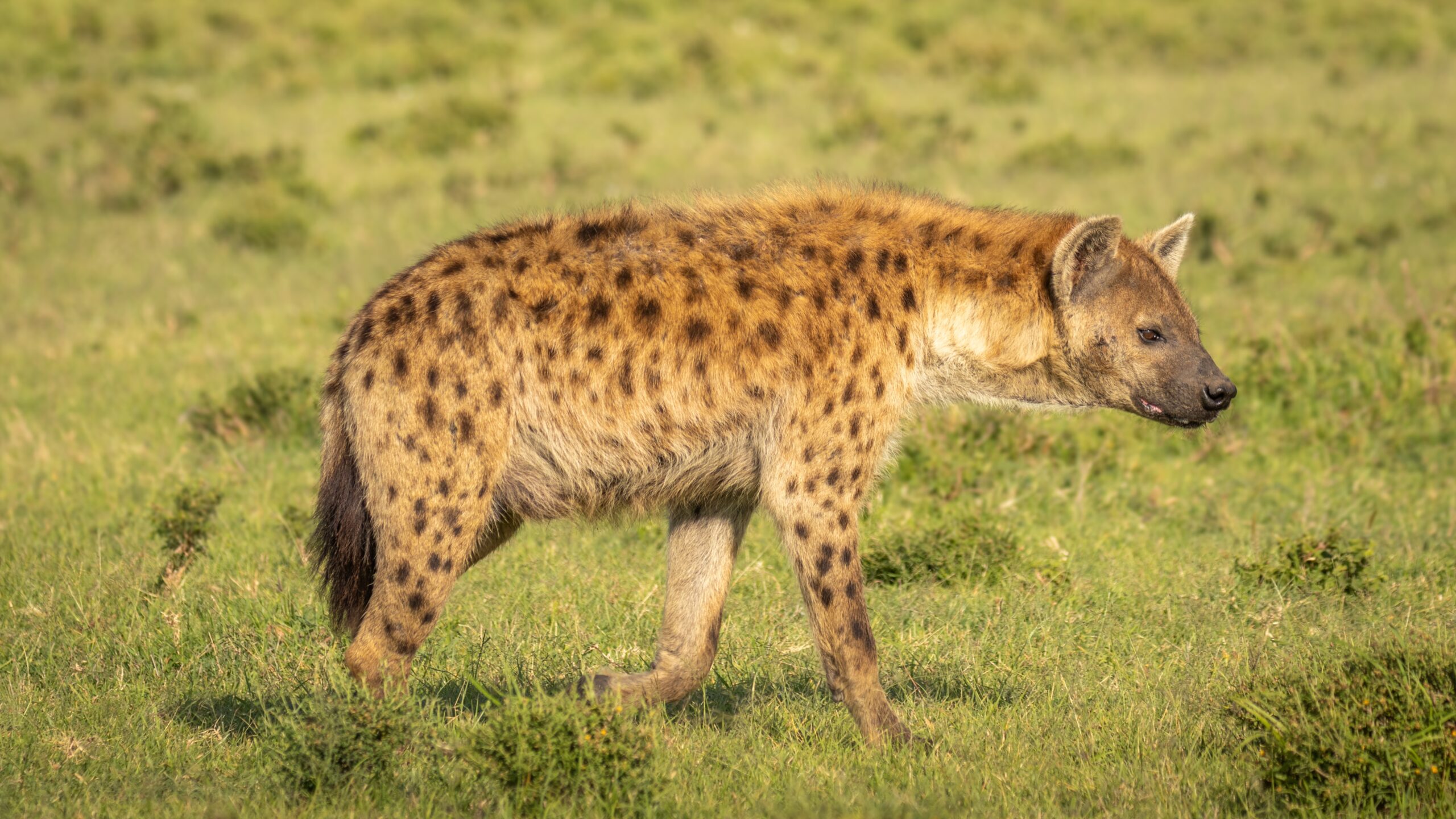
Spotted hyenas have a scruffy, short coat covered with irregular dark spots. Their sandy-brown or grayish fur helps them blend into the arid landscapes of Africa. The pattern of spots varies from individual to individual, making each hyena unique. Their fur may not be the most luxurious, but it’s highly functional, offering both camouflage and protection. The spotted hyena’s rugged appearance perfectly suits its tough lifestyle.
Raccoon
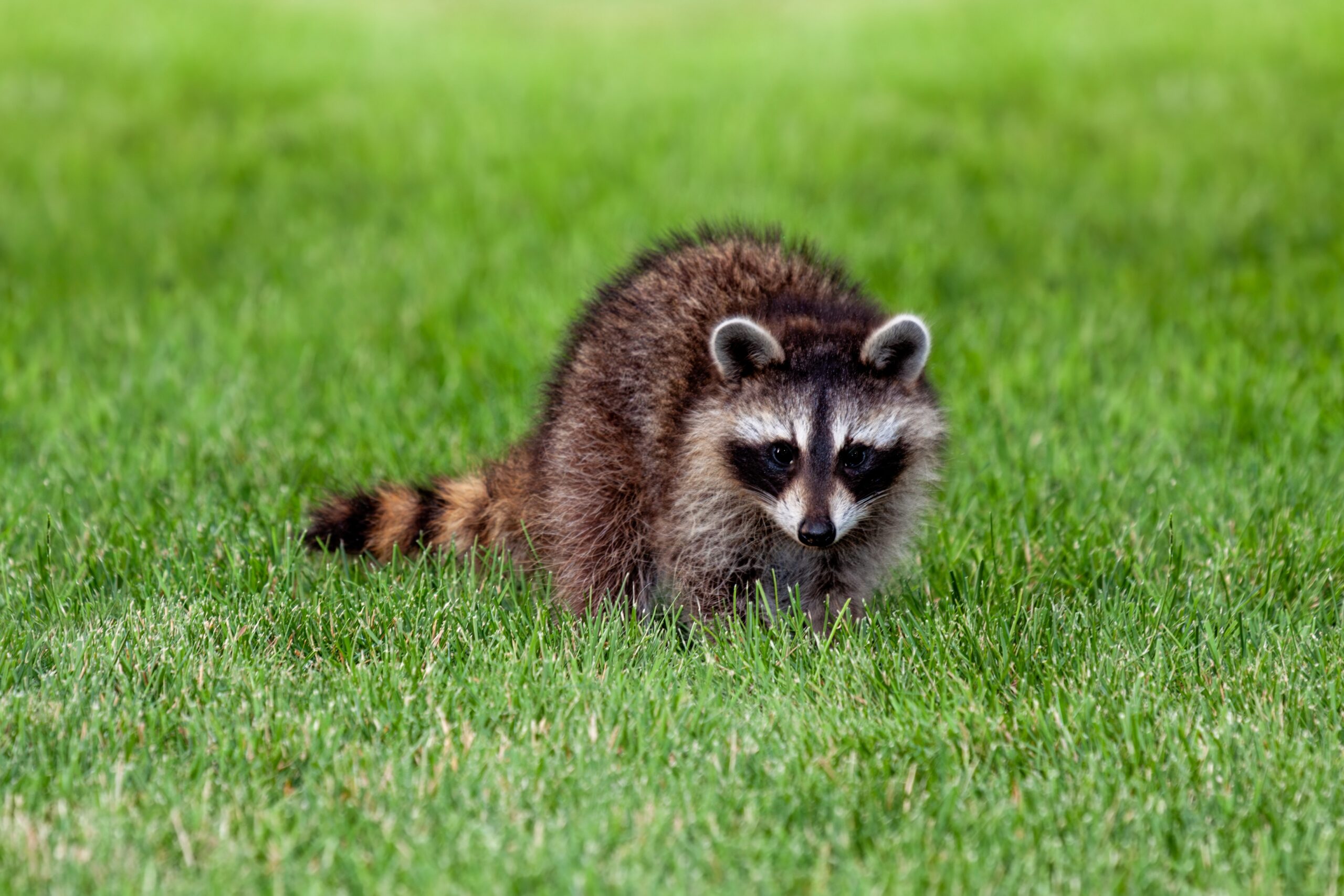
Raccoons are easily recognized by the black “mask” of fur around their eyes and their ringed tails. This contrasting black-and-gray pattern helps them blend into their forest habitats, especially at night. Their dense, coarse fur is waterproof, aiding in their survival near water sources. The raccoon’s fur pattern is as much a part of its clever and curious personality as its behaviors. It’s both functional and iconic.
Skunk
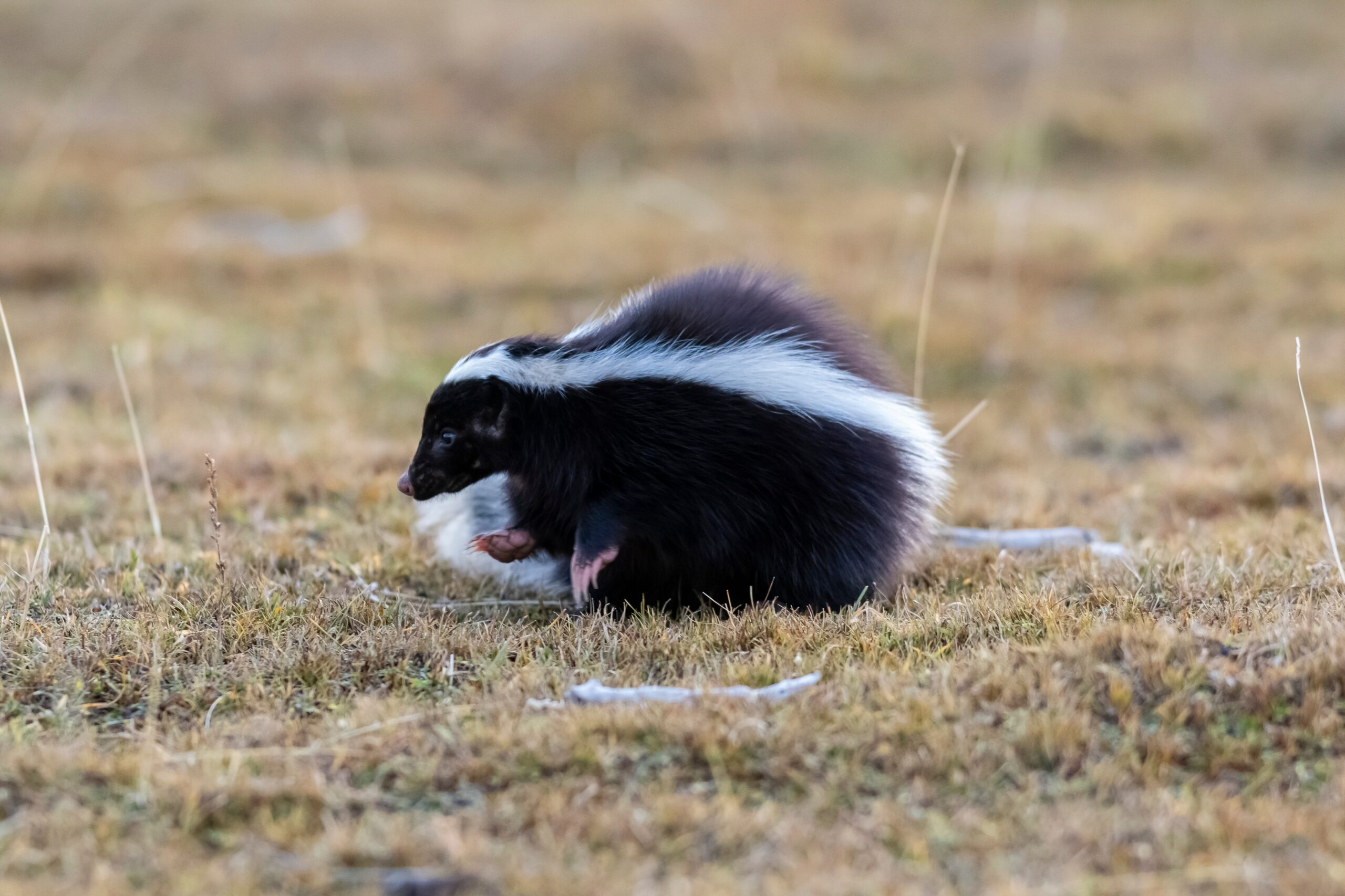
The skunk’s bold black-and-white stripes are a clear warning to predators. These contrasting colors run from its head down to its bushy tail, signaling its infamous defense mechanism. Its thick, coarse fur adds to its ability to survive in various habitats, from forests to grasslands. The skunk’s striking pattern makes it one of the most easily recognizable animals in North America. Its fur is a symbol of both beauty and caution.
Giant Panda
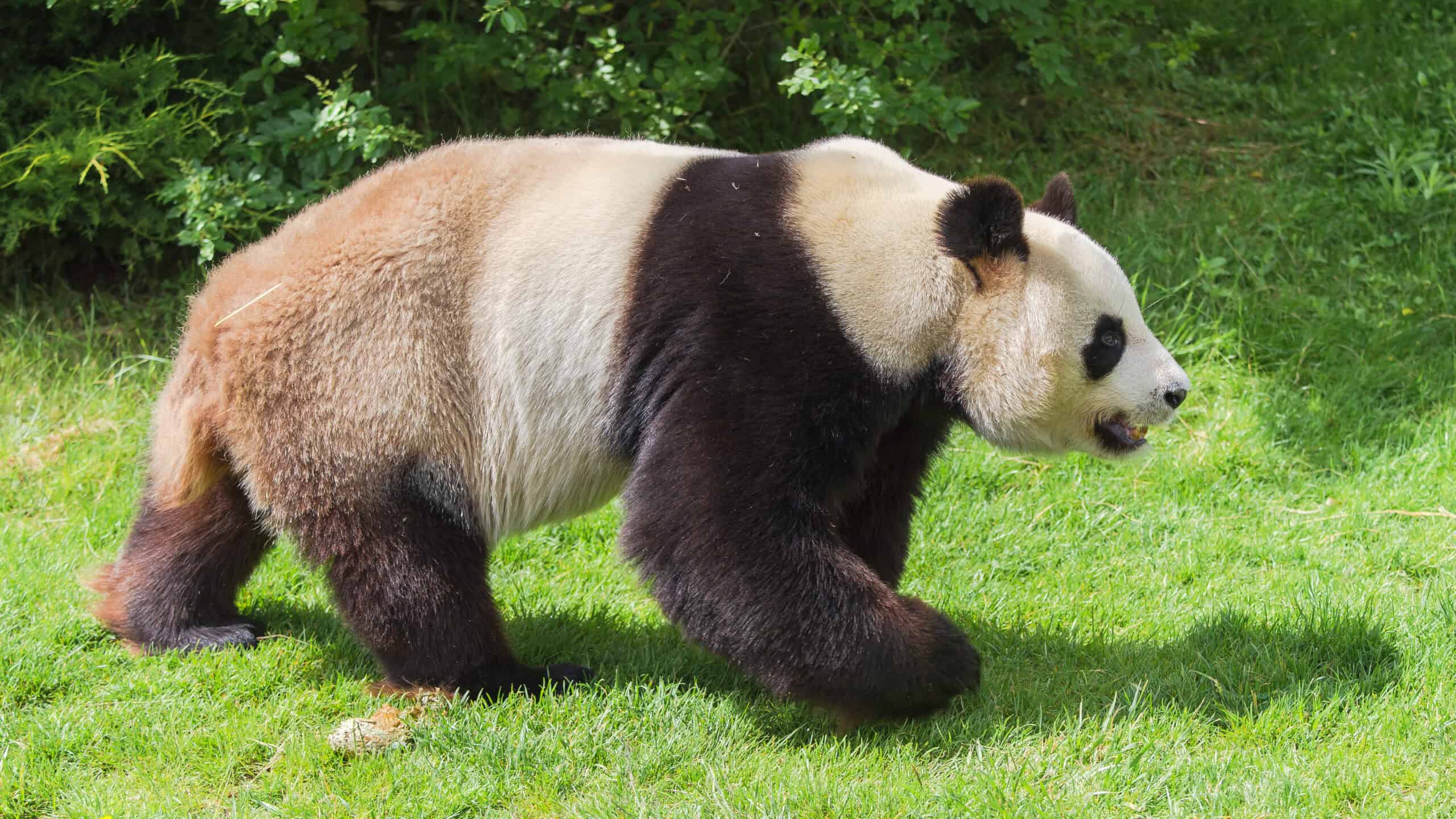
The giant panda is instantly recognizable by its distinctive black-and-white fur. Large black patches cover its ears, eyes, and limbs, while the rest of its body is white. This striking pattern not only makes it visually unique but also helps with temperature regulation in its cold, mountainous habitat. The panda’s thick, woolly coat keeps it warm as it forages for bamboo. Its fur pattern is as iconic as the animal itself.
Lynx
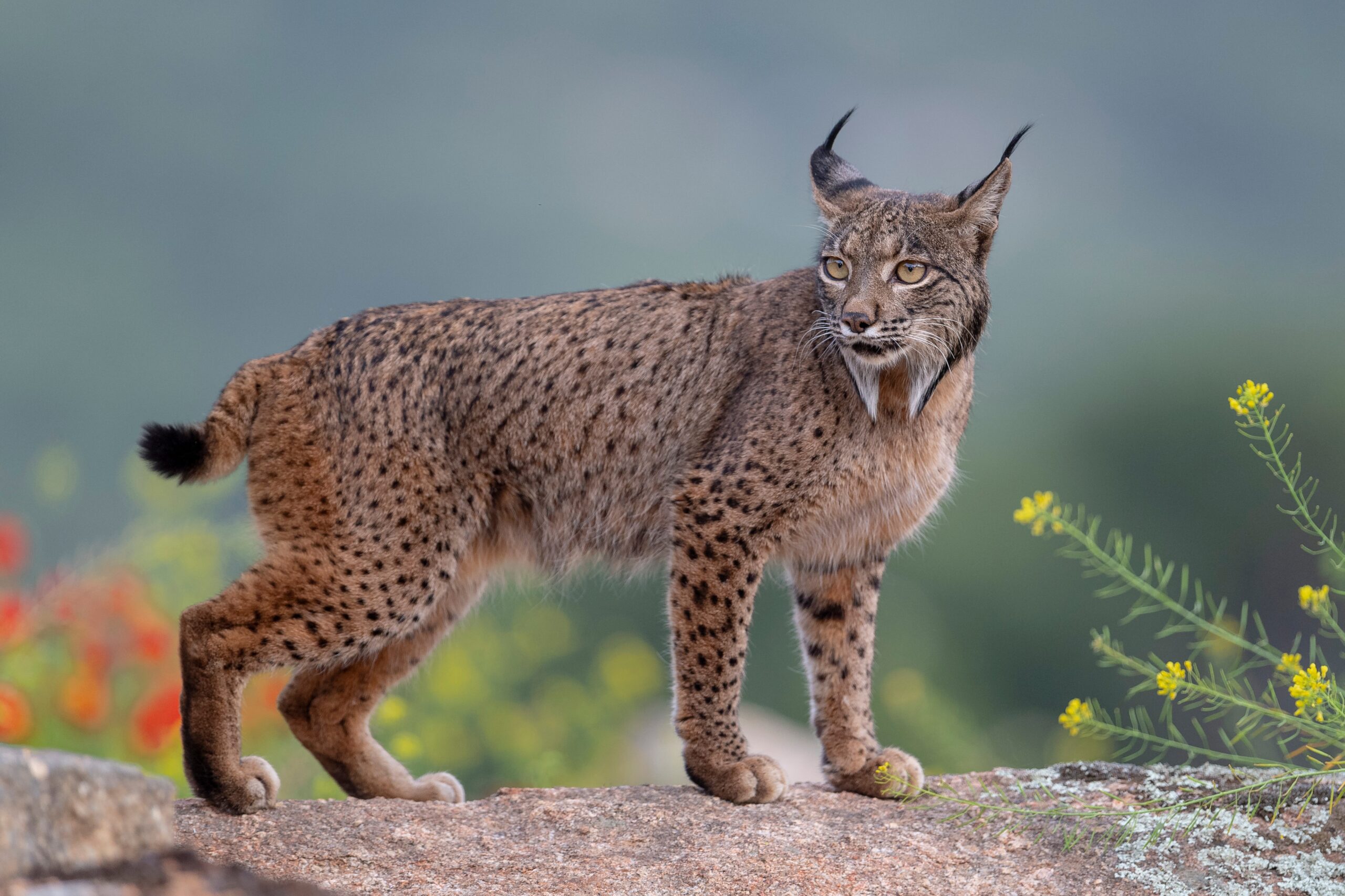
Lynxes are known for their tufted ears and spotted coats. Their thick, pale brown or gray fur is covered in small, dark spots, which vary slightly depending on the species. This pattern allows the lynx to blend into snowy or forested environments while hunting. The lynx’s dense coat provides warmth in harsh, cold climates. Its fur is a perfect balance of beauty and practicality.
African Wild Dog
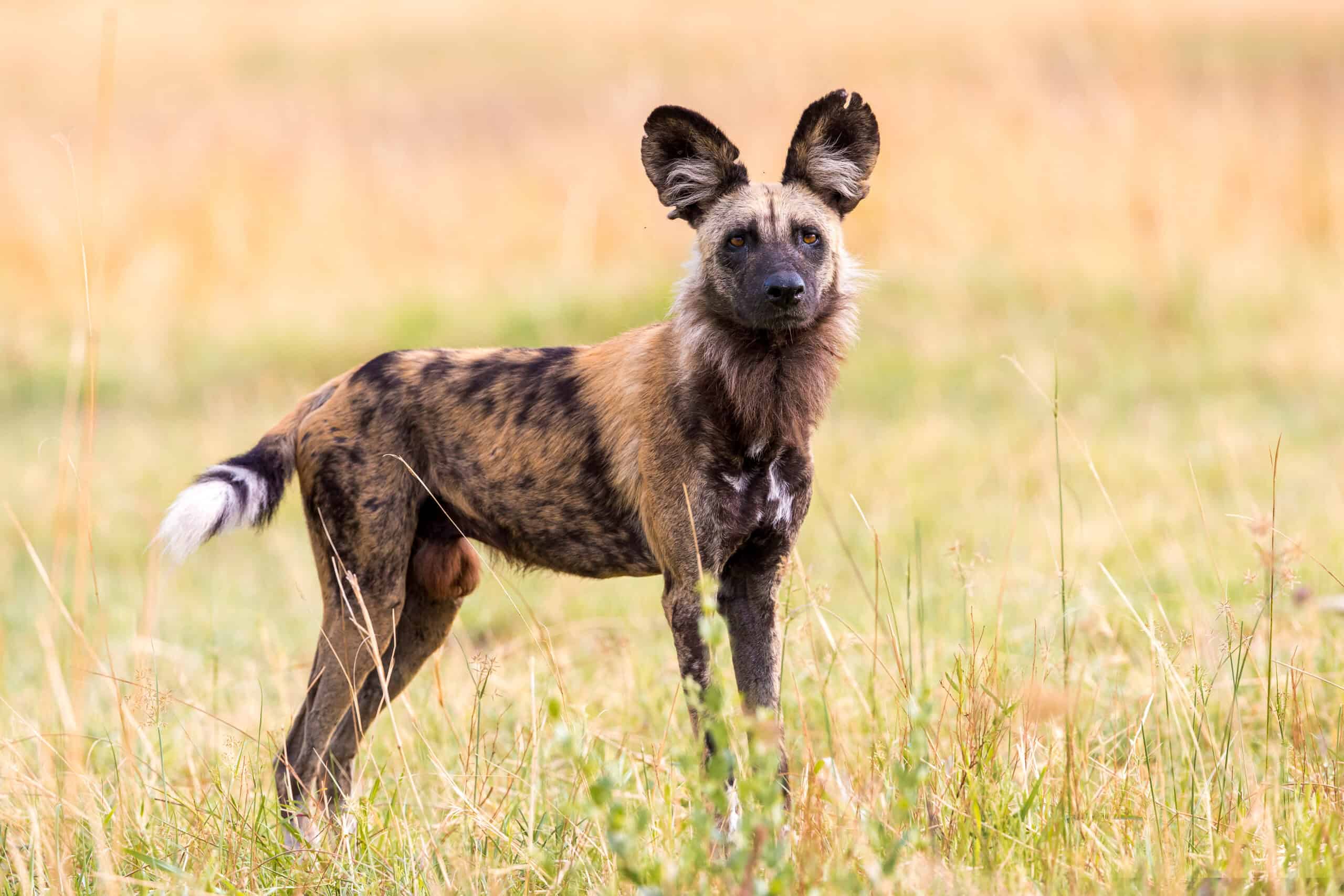
The African wild dog has one of the most unique and colorful fur patterns in the animal kingdom. Its coat is a mix of black, brown, white, and yellow patches, creating a patchwork effect. No two wild dogs have the same pattern, making each one distinct. This bold pattern helps the pack stay visible to one another during hunts in the African savannah. The wild dog’s fur is as vibrant as its social behavior.
Striped Possum
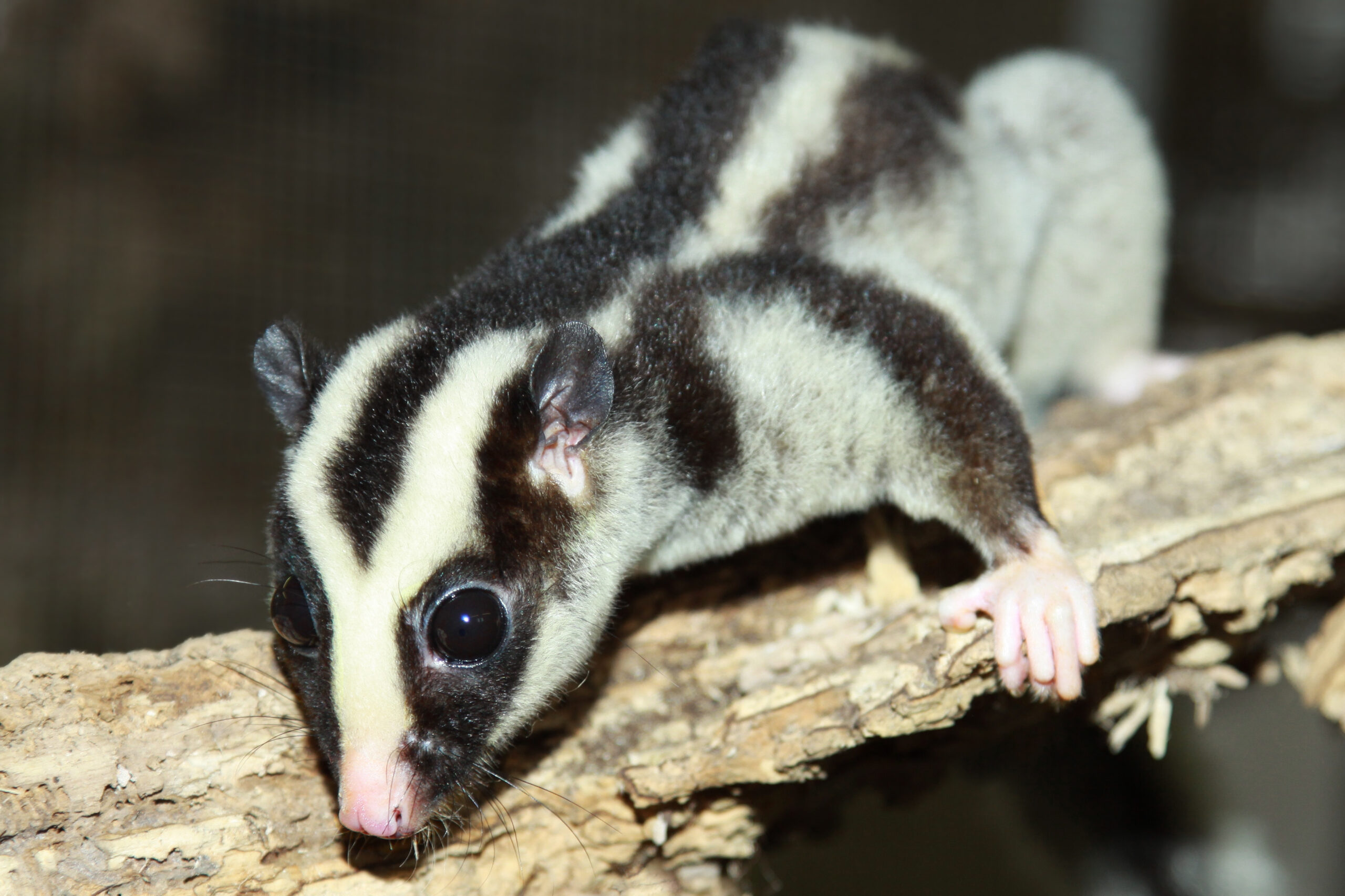
The striped possum is a small, striking marsupial known for its bold black-and-white striped fur. Four white stripes run lengthwise across its body, creating a vivid contrast against its jet-black coat. This unique pattern helps it blend into the forest canopy in its native Papua New Guinea and northern Australia. The possum’s fur is short and dense, providing insulation in its humid, tropical habitat. Its dramatic stripes make it one of the most visually distinct marsupials in the wild.
This article originally appeared on Rarest.org.
More from Rarest.org
19 Fog-Covered Forests with an Air of Mystery
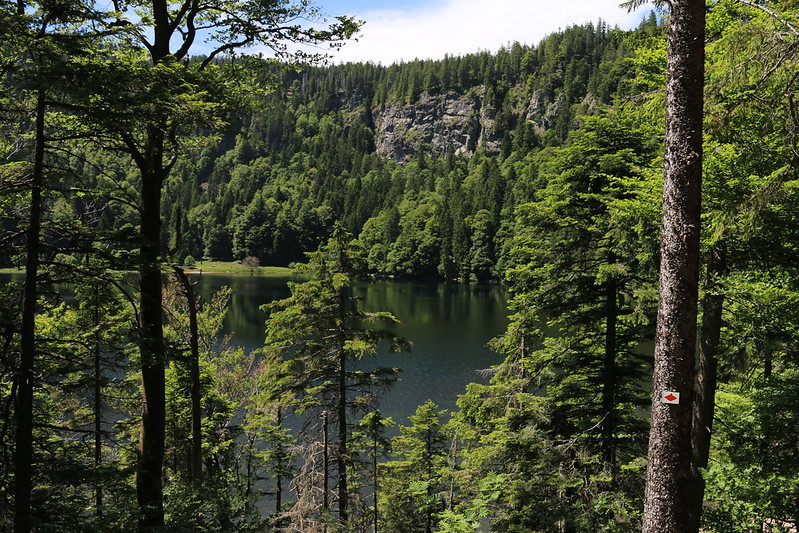
Fog-shrouded forests have a way of transforming even the most ordinary landscapes into places of mystery and enchantment. Read More.
1962 Jefferson Nickel Value Guide

The 1962 Jefferson nickel is made of 75% copper and 25% nickel. Although, there was a time when nickel was made of 56% copper, 35% silver, and 9% manganese. Read More.
1958 Lincoln Penny Value Guide

The 1958 Lincoln penny comprises 95% copper and 5% tin and zinc. The same composition is used for pennies struck from 1909 to 1942 and 1944 to 1982. Read More.
